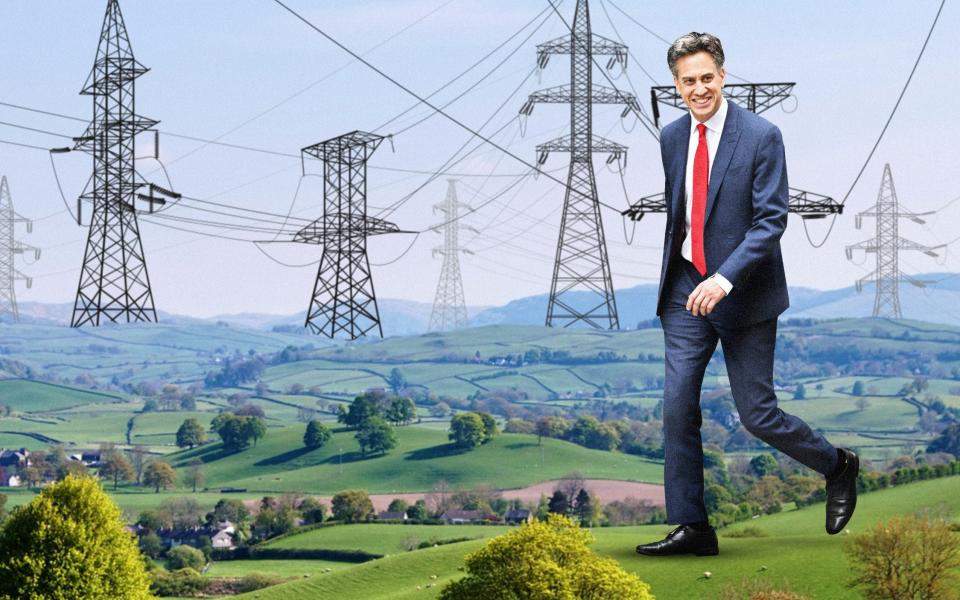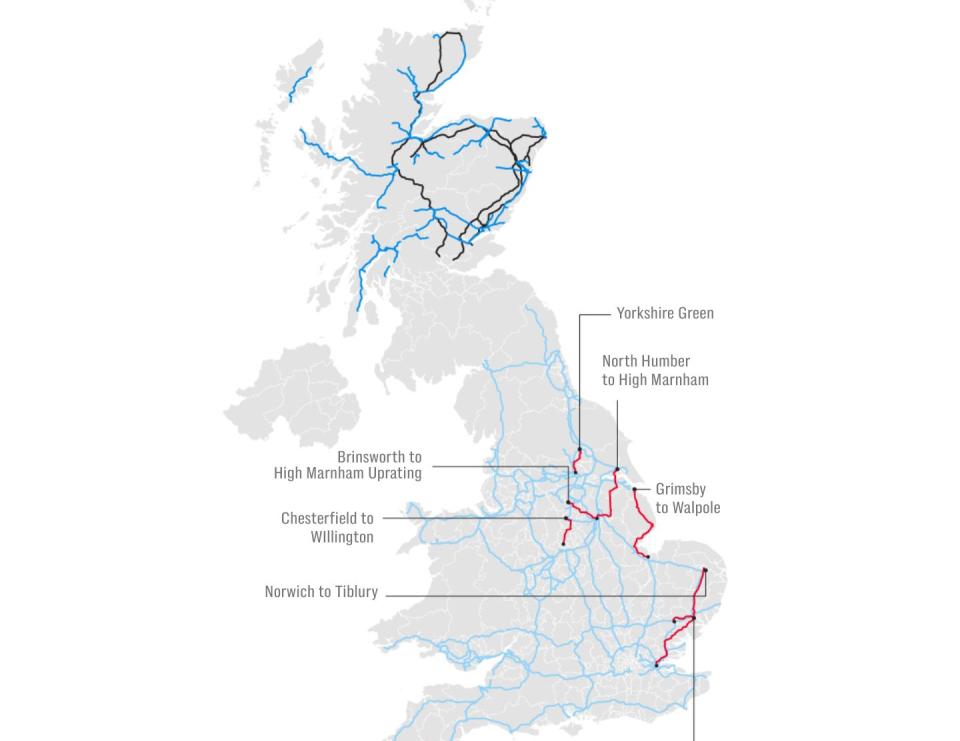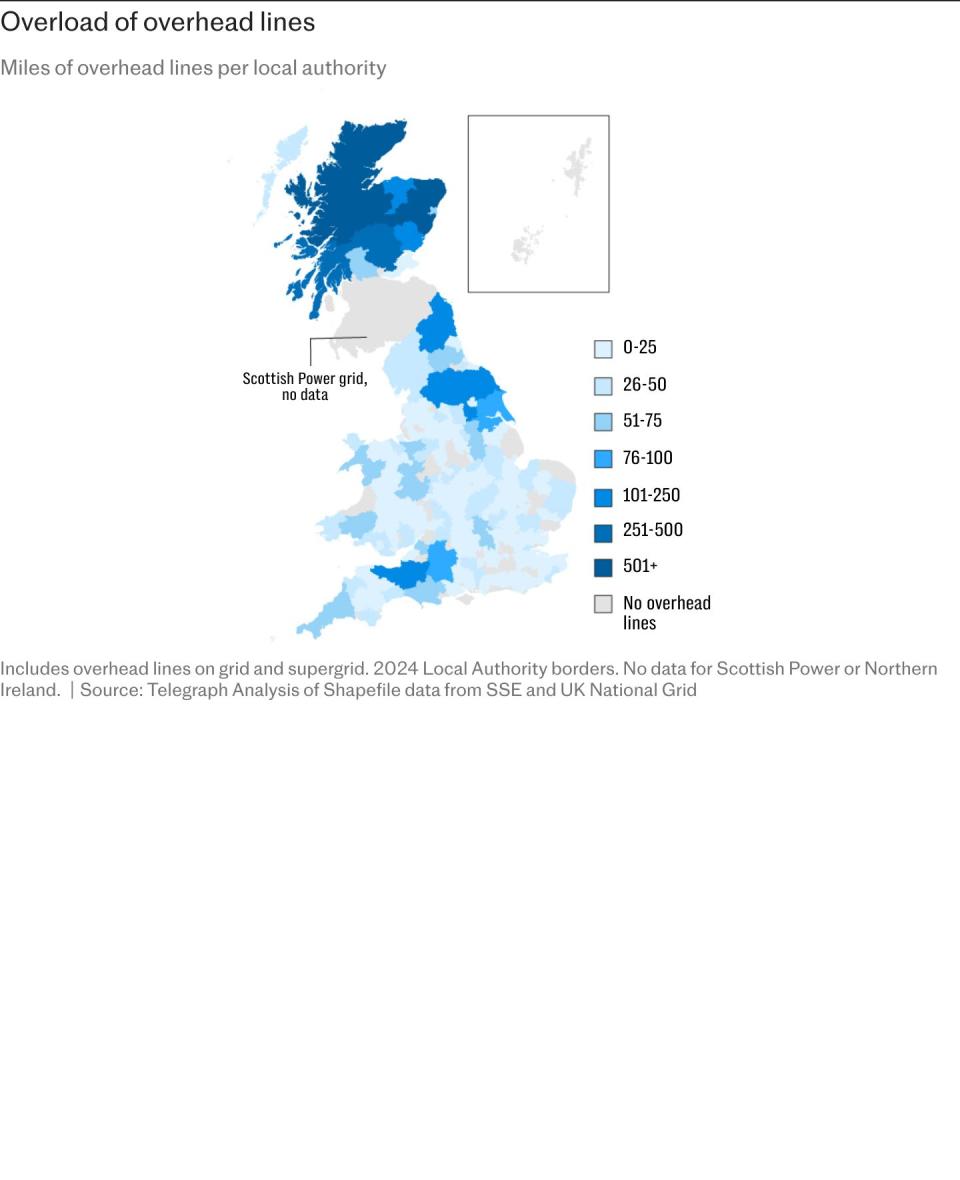Revealed: Ed Miliband’s new ‘pylon hotspots’

The burden of Ed Miliband’s push for hundreds more pylons will fall almost entirely on Britain’s northern countryside, Telegraph analysis reveals.
Dozens of infrastructure projects being forced through by Labour will further crowd parts of Scotland and the North East, despite locals seeing no financial benefit to living near pylons and overhead cables.
Analysis of official figures shows those living in the South or in urban centres will remain unaffected, prompting criticism that the cost of net zero is not being shared evenly across the country.
Mr Miliband told reporters this week he would be happy to live next to a pylon or a wind turbine, suggesting that resistance to the spread of electricity infrastructure was “going to leave people in fuel poverty”.
But in the Energy Secretary’s Doncaster North local authority, there are just 257 pylons – less than half the number in North Yorkshire, where there are 733, Telegraph analysis shows.
The march of the pylons is well under way, or as National Grid calls it, the Great Grid Upgrade. But under Labour, it would seem local protests against the miles of overhead cables and mammoth substations are to be ultimately ignored.

“I’m sympathetic to people’s concerns and anxieties, and I do understand that,” Mr Miliband told The Times on Monday. “But I make two points. Are we going to leave people in fuel poverty? That’s the choice we face – we are in a very unstable geopolitical world, and we are very exposed as a country unless we have clean energy.
“Point two, the biggest threat to the countryside is the climate crisis. The question for Britain is: are we actually going to tackle this?”
The answer seems to have already been decided. The Great Grid Upgrade lists more than a dozen infrastructure projects already underway, including eight that will require overhead power lines, pylons or substations.
These include the Norwich to Tilbury project, a 184km (or 114.3 miles) line of new electricity reinforcement between Norfolk and Essex, which the Grid states “will be made up mostly of overhead lines and pylons, along with some underground cables and a new 400KV [kilovolt] substation”. Further projects are planned in Yorkshire and Northumberland.

Locals’ attempts to protest the new lines have fallen on deaf ears – this week Grimsby residents complained that the towers were a blight on the landscape and damaged property prices.
Indeed, living near a pylon or power line can reduce the average house price by an average of £12,000, according to a London School of Economics study.
Sir Keir Starmer’s Government is pressing on regardless – last month the Prime Minister said the construction of pylons near homes was one of the “hard choices” his Government would have to make.
The projects listed in the Great Grid Upgrade are just the start. A report published last year by the National Infrastructure Commission (NIC) concluded that “17 new nationally significant electricity transmission projects will be required by 2030 to support electrification, a more than fourfold increase on historic rates”.
The NIC claims that the surge in infrastructure investment will be necessary because Britain produces more renewable energy than it can transmit.
The resulting network constraint eats into household bills – the Commission estimated that in 2022 energy bill payers paid between £600m and £1bn due to the grid’s limitations, and predicts this will rise to between £1.4bn and £3bn per year, unless the capacity of the electricity transmission grid is expanded.

With Mr Miliband in the driver’s seat, this is expected to accelerate, to much applause from climate think tanks.
Jess Ralston, of the Energy and Climate Intelligence Unit, said: “Upgrading the grid is essential for our energy security as the last few years of the energy crisis have taught us that renewables act as a price stabilisation mechanism and lower our exposure to gas.
“Making sure that the number of renewable and energy storage projects connecting to the grid is not limited by outdated planning rules and a lack of grid capacity is crucial to achieving energy independence.”
But the burden does not fall evenly. Telegraph analysis found that the bulk of Britain’s pylons were overwhelmingly concentrated in the North and North East.
There are 1,774 towers in Aberdeenshire, where Sir Keir hopes to build the headquarters of GB Energy, for example. This is far more than in urban centres – there are just 51 pylons in Birmingham and 70 in Sheffield.
Parts of Scotland are already swamped with such infrastructure. The Highlands local authority is home to 1,111 miles of overhead lines, and 5,141 pylons – by far the most of any local authority. This is because the northernmost parts of the country are ideal for harnessing on and offshore wind.
Those living in the South are currently spared such oversaturation, which might explain why one in five Londoners supports an increase in pylon lines, compared to one in 10 across the country, according to a survey by the UK’s gas networks.

Tim Bonner, of the Countryside Alliance lobby group, warned that dismissing local concerns risked damaging local tourism industries if areas of outstanding beauty were covered with pylons.
He said: “There isn’t much choice where these lines go because we have major offshore wind in the North Sea, but the price for net zero needs to be shared across society.
“Scotland already generates a lot of renewable energy and puts up with thousands of pylons, but residents’ bills are higher than they are in England. Meanwhile, the local infrastructure in these areas is often appalling, so the communities most impacted by all this national infrastructure don’t benefit from it.
“This isn’t a Nimby position and we all have to do our bit, but too often we assume these rural communities are going to take the burden for society as a whole. You have solar farms being built in the countryside, while warehouses are being built in urban centres without a single solar panel on the roof.”
A Department for Energy Security and Net Zero spokesman said: “Our mission is for clean power by 2030 because clean, homegrown energy is the best way to protect billpayers and boost Britain’s energy independence.
“Securing Britain’s clean energy future will require improving infrastructure to get renewable electricity on the grid. Without this infrastructure, we will never deliver clean power to the British people.
“It is important we take people with us and are considering ways to ensure communities who live near clean energy infrastructure can see the benefits of this.”